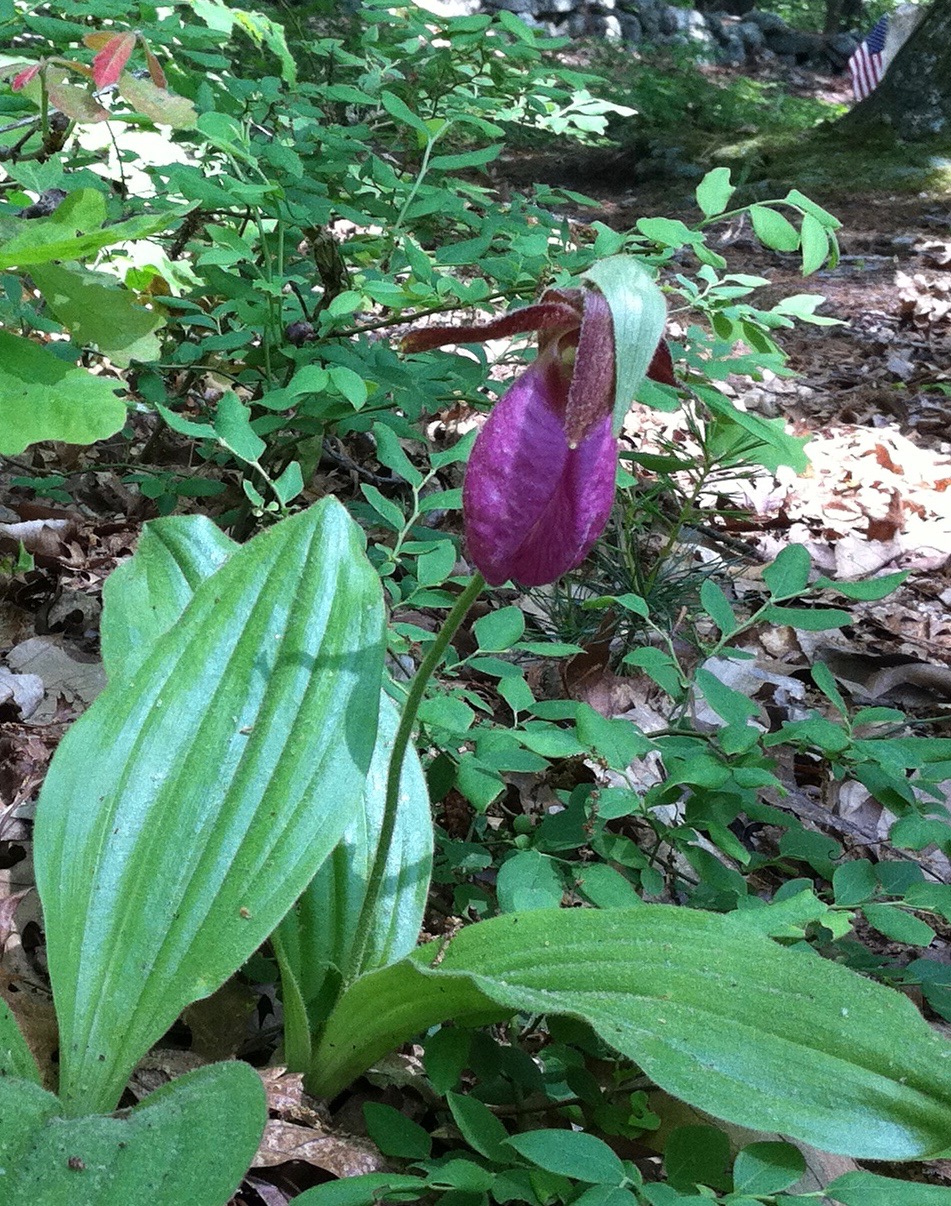Ted Kellogg: Ribbon Judging – Putting Your Best Plant Forward
I’ve enclosed a picture of a ‘blue ribbon’ Cypripedium acule growing in Rhode Island. Of  course, any orchid plant surviving in the wild and reproducing is a winner in Nature’s Show. This plant, blooming in 2011, in a forest cemetery was among many others of the same genus. No other species of orchid was in bloom at that time. It was the only one with the very dark colored pouch. If a team of orchid judges had been asked to place blue, red and yellow ribbons on the best Cypripedium acule growing in this natural setting, the plant pictured would have received the blue ribbon.
course, any orchid plant surviving in the wild and reproducing is a winner in Nature’s Show. This plant, blooming in 2011, in a forest cemetery was among many others of the same genus. No other species of orchid was in bloom at that time. It was the only one with the very dark colored pouch. If a team of orchid judges had been asked to place blue, red and yellow ribbons on the best Cypripedium acule growing in this natural setting, the plant pictured would have received the blue ribbon.
But what if those judges were looking at an orchid show with many exhibits. If they had been at the Venice 2016 show, they would have seen 214 plants entered for ribbon judging. The registration committee had placed each of these plants into one of 90 groups (classes). The classes held from 1 to 13 plants each. A team of orchid judges looked at each class and awarded blue-1st, red-2nd, or yellow-3rd ribbons as they wished. What criteria did they use? Sometimes a class with 1 entry got a red or yellow ribbon, or maybe didn’t get a ribbon. Why? Sometimes the judges decided two plants in a class each deserved a blue ribbon.
What did the judges look at? Why was one plant awarded higher than another? I’ll try to explain what the judges consider in ribbon judging. I’ll give suggestions for you to impress the judges that you have put your best plants forward.
Orchid Envy, one of our own local growers here in Venice, will have a great selection of quality plants for sale.
Venice Community Center. Doors open at 6:30.
